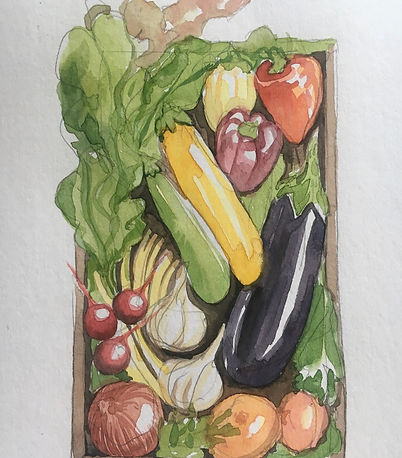What is PENCIL YOGA & what are PABS?
- aditydeo

- Oct 2
- 4 min read

In 2017 I started teaching art to adults, and one of my first students was Shruti. Shruti would come for her class every week, very diligently and despite being a young mom of 2 girls under the age of 12, she managed to get a fair amount done during the week to come back to class with infectious curiosity. Over the 3 years she attended class with me, her almost constant complain was this - "why can't I draw like you? I watch you make a line and yet, when I want to make just the same line, why am I not able to?"
I have thought a lot about this complaint over the years, because Shruti was not the only one who seemed to have this problem. My response used to be - "I am doing nothing special, it is just a line. Anyone can make it". We also both agreed that probably all she needed was practice. Sure. This is advice given by all experts to novices. And I suppose it makes sense too, that practice will make you better. As the numbers of students grew over time, I realised that Shruti was not the only student who was facing this frustrating problem. I have seen many students struggling with drawing a strong, confident, controlled line; not just at the beginning but well after years of making art and attending class. So I decided to get to the bottom of this mystery - why are my students not able to draw like me? I started to closely observe how they drew their line to figure out what they were really doing with their pencils.
The ability to draw a strong line is paramount in art because this line is the backbone of any kind of artwork. And until you have achieved that line quality you are only ever moderately satisfied with your work. I know this very well, because I myself have been through this same situation for years. The quality of your painting lies in the quality of your line.
Over the next 5 years or so, I noticed the same problem with the students. And in each session during that entire time, they would all resolve to 'practice' more. But one day it just hit me - I had no idea when or how my line had changed so dramatically and when that change had occurred! "How strange", I thought. "When was the last time I was dissatisfied with my drawing?" I wondered, but couldn't remember. "What kind of practice had I done in order for my line to change, had I practiced anything special at all?" Suddenly I realised I was someone who had overcome the very struggle my students had been complaining about. I had achieved great control over my line! That made me think more deeply upon this issue. May be I could think back & retroactively discover the magic trick that would make my student's line strong too!
So here is what I have discovered. Yes, Practice is very important. But practice can also be focussed - a more deliberate, goal-oriented practice. And the focus of practice for all beginners should be to strengthen their PABS by doing Pencil Yoga. Yes, you heard this first here. PABS are the 'abs' of your palms - these are the muscles of your fingers, palm and wrist of your drawing hand. When you have strong pabs, you can draw very LIGHT, CONTROLLED, PREDICTABLE lines. Pabs help you to modulate the pressure you apply on your pencil to make a line, because of which your line can be of varying darkness throughout your artwork. Being in control of your line helps you to draw exactly what you visualise on blank paper. You no longer need erasers in your drawing!
How can you build strong PABS? With Pencil Yoga. Here's how you practice pencil yoga. I'd love to say that you must wake up at the crack of dawn, roll out your mat and put yourself in a contorted posture - but not really. Although, I am only half joking. You don't need a mat, or getting up at an ungodly hour - but you will need to do some contortions. Of the hand. To practice Pencil yoga, start with a paper and pencil. Sit in a comfortable position at a desk with your paper in front of you. Now once you have placed the paper, you cannot move it till the entire exercise it finished. On this paper you start making lines holding the pencil in as many different positions as you need to in order to make the following sequence of lines.
VERTICAL LINES: top to bottom from the left of the page to the right.
VERTICAL LINES: bottom to top from left of the page to the right.
HORIZONTAL LINES: from left to right, top of the page to the bottom.
HORIZONTAL LINES: from right to left, top of the page to the bottom
DIAGONAL LINES: bottom left to top right.
DIAGONAL LINES: top right to bottom left.
DIAGONAL LINES: top left to bottom right.
DIAGONAL LINES: bottom right to top left.
CIRCLES: small, medium and large - Clockwise
CIRCLES: small, medium and large - Anti-Clockwise
The goals of this exercise are:
Holding your pencil further away from the tip than when writing.
Changing the hold on the pencil according to the direction of the line you wish to draw.
Drawing long-span lines.
Drawing lines in different directions.
Modulating pressure when drawing these lines.
By keeping the paper stationary, and moving your hand around, you force your hand to draw lines in unfamiliar positions thereby forcing flexibility.

You can do this on any kind of paper - even newspaper, That's because it is fairly unimportant how straight or accurate your lines turn out. This exercise is only to get your hand moving. And the less you focus on the line at this point, the more confident your lines will become.
I would recommend making Pencil Yoga a part of your daily drawing practice for about 10 minutes or so. And before you know it you will have much stronger PABS & much better drawings.


Comments